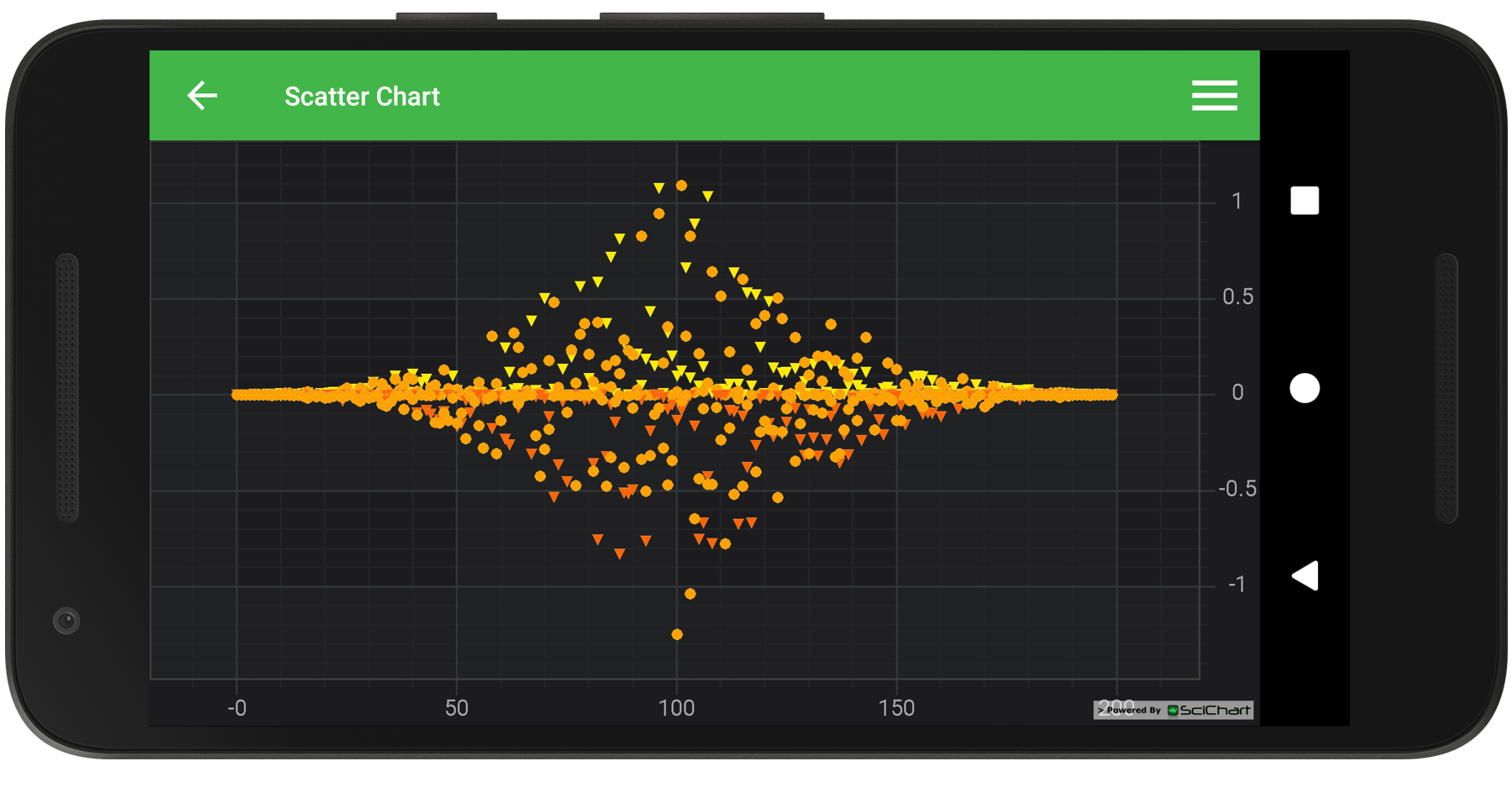Android Chart - Examples
SciChart Android ships with ~90 Android Chart Examples which you can browse, play with, view the source-code and even export each SciChart Android Chart Example to a stand-alone Android Studio project. All of this is possible with the new and improved SciChart Android Examples Suite, which ships as part of our Android Charts SDK.
SciChart charts are very popular with scientists and engineers, but also find their application in sales dashboards. Drawing a scatter diagram is the first step in looking for correlation between variables. This example generates a Scatter Chart in code.
The XyScatterRenderableSeries can be used to render an XyDataSeries (which contains one X-point and one Y-point), XyyDataSeries (renders Y values), XyzDataSeries, HlDataSeries and OhlcDataSeries(renders Close values).
The Scatter Chart uses the PointMarker API to define the marker shape and size. This can be customized in code or you can create your own Point-Markers using our SpritePointMarker or DrawablePointMarker type.
Tip!
Perhaps you wanted a scatter point with a line? If so you can do this using the FastLineRenderableSeries and calling the setPointMarker() method.
The full source code for the Android Scatter Chart example is included below (Scroll down!).
Did you know you can also view the source code from one of the following sources as well?
- Clone the SciChart.Android.Examples from Github.
- Or, view source and export each example to an Android Studio project from the Java version of the SciChart Android Examples app.
- Also the SciChart Android Trial contains the full source for the examples (link below).


